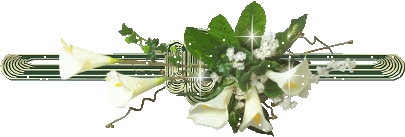 (scientific name: Moringa oleifera) Called “Malunggay” in the Philippines, “Sajina” in the Indian Subcontinent, and “Moringa” in English, it is a popular tree. Many Asians use the leaves of Malunggay (Sajina) like spinach and also the fruit it produces as a vegetable, like asparagus. Both the leaves and the fruits are very nutritious, which contain many vitamins like Vitamin C and other minerals. For centuries, people in India, Philippines, Malaysia, and Thailand have been eating these leaves as a part of their food. It is one of the world's most useful plants. It is used as food, effective flocculant or water treatment, antibiotic, source of oil, and coagulant for turbid waters.
(scientific name: Moringa oleifera) Called “Malunggay” in the Philippines, “Sajina” in the Indian Subcontinent, and “Moringa” in English, it is a popular tree. Many Asians use the leaves of Malunggay (Sajina) like spinach and also the fruit it produces as a vegetable, like asparagus. Both the leaves and the fruits are very nutritious, which contain many vitamins like Vitamin C and other minerals. For centuries, people in India, Philippines, Malaysia, and Thailand have been eating these leaves as a part of their food. It is one of the world's most useful plants. It is used as food, effective flocculant or water treatment, antibiotic, source of oil, and coagulant for turbid waters.It is also called mother's best friend, and miracle vegetable by many who know malunggay's beneficial uses. It is easy to plant and is available year-round. It is a fast-growing, drought-resistant tree cultivated in all countries of the tropics with leaves that can, among other things, its high calcium content, lactating mothers are advised to eat malunggay leaves to produce more milk and address the problem of malnutrition.It is also used to cleanse wounds and ulcers. It helps alleviate scurvy, asthma, earache, and headaches.
Malunggay leaves are an excellent source of vitamin A and B, and minerals such as calcium and iron. It is even an excellent source of protein, being higher than the amino acid pattern of Food and Agriculture Organization-reference protein, yet contains very low fat and carbohydrates. The leaves are incomparable as a source of the sulfur-containing amino acids methionine and cystine, often the natural minerals humans lack. Due to its high vitamins A, C, and E, which are very potent antioxidants, malunggay is a very good quencher of unstable free radicals that can react with and damage molecules that cause aging. Antioxidants reduce the appearance of wrinkles and fine lines. They also prevent the onset of various chronic diseases like arthritis, cancer, and heart and kidney diseases.
Malunggay contains the phytochemical niaziminin, which is found to have molecular components that can prevent the development of cancer cells (Faizi et al., 1992) and correlated with inhibitory ability against superoxide generation. The first naturally-occuring thiocarbamates, novel hypotensive agents niazinin A, niazinin B, niazimicin and niaziminin A and B were isolated from malunggay.
It's been called miracle vegetable because it is not just a food, it is also a medicine. It may therefore be a functional food. Malunggay promotes good eyesight, digestion, facilitates bowel movement, and is a cure for stomach ache. It has actually been dubbed “the most nutritious plant in the world,” and is also an obligatory ingredient in chicken soup.
It's nutritive properties began to be known in 1999, when it was used in Africa to fight malnutrition. Its nutritive properties, such as beta carotene, and the presence of antioxidants such as alpha-tocopherol made it suitable for the production of high-end health products.It can also be used as an active ingredient in beauty products such as emollients.






2 comments:
Malunggay ???
never heard before...
thanks for your info, nice post..
never heard or saw it before.
the picture is also not totally clear to recognize this vegetable. i'll search in the internet. thanks for sharing!
Post a Comment